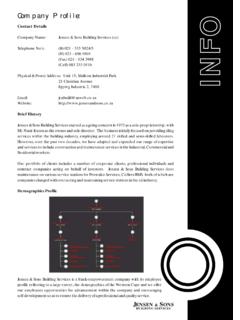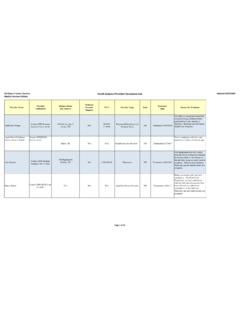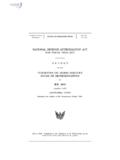Transcription of International Society for Prosthetics and Orthotics …
1 THE RELATIONSHIP BETWEEN Prosthetics AND Orthotics services AND community based rehabilitation (CBR) A Joint ISPO/WHO Statement November 2003 Introduction In the 1970s the World Health Organization (WHO) introduced a new approach to disability prevention and rehabilitation known as community - based rehabilitation (CBR). The aim was to ensure that rehabilitation services can be provided to all persons with disabilities, whether they live in a city or in the countryside or whether they are rich or poor. This approach involves measures taken at community level to use and to build upon the resources of the community as well as drawing on the services offered at district, provincial and central level. Thus the complete rehabilitation structure of this model consists in all of four levels: community , district, provincial and central. The last three of these levels constitute the referral system for the first, the community level.
2 The personnel of institutions at the central and provincial levels are those who can be expected to work in conventional rehabilitation and health services . At central level they may, for example, include specialized physicians, therapists, and Prosthetics and Orthotics personnel. At provincial level they may be general physicians, some (though usually few) specialized physicians, therapists, and Prosthetics and Orthotics personnel. The personnel based at district level, however, are not likely to possess any specialized training in rehabilitation . They are usually general physicians and nurses who are concerned with the provision of health care services . Nevertheless, as discussed below, they may play an important role in the referral system and in the transfer of knowledge and skills in rehabilitation to the community level. Finally, at community level, there are usually no specialised personnel at all, in either health or rehabilitation .
3 The persons working there - usually called community health workers or community rehabilitation workers - often do their work on a voluntary and part-time basis in addition to their normal duties in the community . Since they are likely to have limited or minimal education in health International Society for Prosthetics and Orthotics and rehabilitation , they need to receive training and support from personnel in the referral system. The success of this approach to rehabilitation will depend on the development of an integrated and coordinated programme in which the activities at each level are clearly defined. It will also depend on the development of an educated and trained workforce, with clear definition of the role of the different types of personnel. WHO has recognized that although most basic rehabilitation activities can be carried out in the disabled person s own community , many persons with disabilities have to be referred to other rehabilitation services outside their own community .
4 Among this group are those persons who require prostheses and orthoses. This is because prostheses and orthoses of an acceptable quality cannot realistically be made in every single community within a country. This means that for the successful, widespread provision of Prosthetics and Orthotics services there needs to be a strong relationship between the specialized services and community - based rehabilitation programmes. With regard to the provision of Prosthetics and Orthotics services , the International Society for Prosthetics and Orthotics (ISPO) has gone some way towards defining the job descriptions and educational requirements for the different categories of personnel directly involved in this field. These categories are: prosthetist/orthotists (Category I); orthopaedic technologists (Category II); and Prosthetics / Orthotics technicians (Category III). Some consideration needs to be given to the use of these categories of personnel in the referral system on which WHO s approach depends and in particular to the role and training in Prosthetics and Orthotics of primary health care personnel and community health/ rehabilitation workers.
5 Ideally, each country should have adequate numbers, possibly hundreds or thousands depending on population, of community health/ rehabilitation workers. All of these workers need to receive training so that they possess a certain minimum knowledge of rehabilitation . The obvious challenge with respect to the Prosthetics / Orthotics component is how to manage the transfer of this knowledge when so few resource persons are normally available in Prosthetics and Orthotics services especially in low-income countries. It may not be possible that Prosthetics and Orthotics personnel could be directly involved in the training of community health/ rehabilitation workers. At best, they can only contribute to the training of primary health care personnel, so that these in turn can include issues related to Prosthetics and Orthotics service in the various training programmes for persons working at the community level.
6 The following sections offer guidance on how community - based rehabilitation and the referral system may be used to assist in the promotion and improvement of Prosthetics and Orthotics services . Basic community level Most of the rehabilitation activities in village or community are carried out by community health/ rehabilitation workers, who usually work under the supervision of Primary Health Care (PHC) personnel or mid-level rehabilitation workers where available. In matters related to Prosthetics and Orthotics , the activities at community level will increase awareness to disability and rehabilitation with focus on prevention. In addition it will: assist in identifying persons with disabilities with a focus on early detection; identify persons requiring Prosthetics and Orthotics services ; promote awareness of the benefits of using prostheses and orthoses ; act as a link between the person with disability, the family, and the Prosthetics and Orthotics services , or an adequate supervising body assist with follow-up of the person with disability with regard to the use of, and adaptation to, the device; assist with adaptation of the environment and take measures to facilitate accessibility, good hygiene and activities of daily living; provide information to the appropriate support level with regard to follow-up and the acceptance and use of prostheses and orthoses.
7 Assist in reducing further impact of impairments, through good hygiene, wound treatment, and prevention of secondary complications such as contractures and bed-sores; encourage the person with disability to carry out needed exercises; arrange for maintenance and repairs to prostheses and orthoses. It is important for the community health/ rehabilitation worker to understand what repairs can be done at community level; support and advise in the provision of simple assistive devices such as special chairs, parallel bars and crutches; assist with the social rehabilitation of the person with disability. District support level or sub-district level (health care) This support level does not normally offer any specialized rehabilitation services , since specialized physicians, therapists, and Prosthetics and Orthotics personnel are rarely available here. However, basic and general rehabilitation services may be provided by health care personnel, such as general physicians and (in particular) nurses.
8 Where Prosthetics and Orthotics personnel are available, general Prosthetics and Orthotics services , including repair and replacement of prostheses and orthoses should be provided. These services must include the most common and most needed devices, prostheses and orthoses for the lower limb. At district level, in matters related to Prosthetics and Orthotics , primary health care personnel and/or mid-level CBR workers will: refer persons with disabilities to the appropriate support or service level together with information about the needs and expectations of the person; explain the rehabilitation programme to the person with disability and the family; assist persons with disabilities in preparation for the fitting and use of prostheses and orthoses, including physical therapy and wrapping of the stump; guide persons with disabilities towards sources of funding for rehabilitation service; provide information to the provincial service level on the numbers of persons with disabilities, the types of disabilities found and treated, the numbers and types of prostheses and orthoses fitted, and outcomes of the services .
9 Consider the socio-economic situation and needs of persons with disabilities; assist persons with disabilities to be integrated into Society , through education and work opportunities; provide support in rehabilitation issues to the community ; provide training to community health/ rehabilitation workers in rehabilitation , including basic Prosthetics and Orthotics related issues as there is a great need to educate and train community health/ rehabilitation workers for their role in Prosthetics and Orthotics . This training should be based on a curriculum set centrally. Supervision and advice on their work in Prosthetics and Orthotics will continue to be needed as there is no tradition or depth of experience in this field. Provincial support level This intermediate support level is situated in a provincial institution and, apart from other medical and paramedical personnel, may be staffed by all categories of Prosthetics and Orthotics personnel up to and including Category II.
10 The intermediate support level will: provide general Prosthetics and Orthotics services , including repair and replacement of prostheses and orthoses. The services that it should offer must include the most common and most needed devices, prostheses and orthoses for the lower limb. However, prostheses and orthoses for other levels may be fitted if there is a particular need and demand for such a service; refer persons with less common disabilities to the specialized service level; participate in the training of health care personnel in Prosthetics and Orthotics related subjects so that all these personnel, in turn, can include Prosthetics and Orthotics issues in the training they provide for community health/ rehabilitation workers. As in the case of training for community health/ rehabilitation workers, the training of primary health care personnel should be based on a curriculum set centrally; provide support in rehabilitation issues to the district level; monitor and evaluate Prosthetics and Orthotics services and programmes of disability prevention from a provincial viewpoint; provide information to the specialized service level on the numbers of persons with disabilities, the types of disabilities found, the numbers and types of prostheses and orthoses fitted, and outcomes of the services .
















